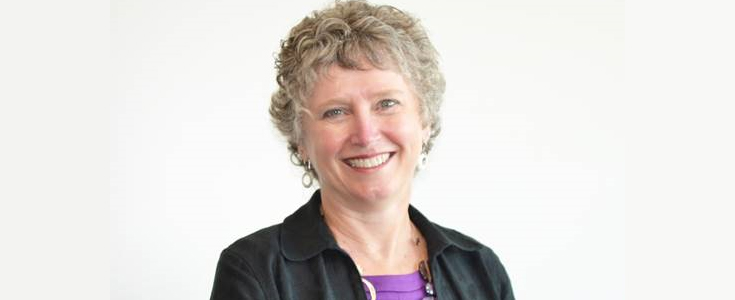
Get the shot, not the flu
There’s really no excuse not to protect yourself and others this flu season
Resources for Inpatients re: Influenza
Helpful posters to post in your clinical areas
Change in Staff Influenza Immunization Statistics
OESH provides statistics on staff immunizations based on influenza immunization administered by OESH. Historically these numbers have not included staff who receive their immunization from physicians, pharmacists, etc. In the event of an outbreak, unimmunized healthcare workers (HCWs) should wear a procedure/surgical mask when providing direct care for all patients on the unit as outlined in the Influenza Outbreak Management Protocol. Staff will be asked to provide proof of immunization to OESH which will be added to our database/statistics and supplied to managers.
Staff resources
For a schedule of staff flu clinics, click here.
For a list of frequently asked questions, click here.
This will be my last Open Letter, and for me it is a time to reflect on the past and think about the future. I will be retiring at the end of the month and I am proud to have had the opportunity to be the Chief Nursing Officer for the WRHA.
The last 10 years have gone very quickly and I have seen many changes in our health system, particularly in the last few years. Many of my most recent messages have been about change, how to adapt, and how to embrace the new opportunities for the future. I hope that you have used some of the resources on self-care and building resilience during times of change.
As I think back to my first few weeks in this job, the health region was facing a major crisis: the second wave of the H1N1 pandemic in the fall of 2009. We had learned a lot from our experience with H1N1 in the spring of that year, but in the fall, a second outbreak occurred. But this time, we had access to vaccine. The region mounted the largest mass immunization campaign in its history as well as responding to the many sick patients who came to us for care. I was new to my role as an executive, but needed to get up to speed quickly to lead the system-level planning that needed to occur and to ensure that the teams had what they needed to meet the demands. As a nurse, I spent my evenings working in the immunization clinics across the system. I worked alongside nurses and other professionals to immunize as many families in the community as possible. This experience has always served to remind me that, as a health care system, it is remarkable what can be achieved if we all focus on a common goal to meet the health needs of our community.
H1N1 also serves to remind us all of the importance of participating in the annual flu immunization campaign. Influenza causes deaths in our region every year. It is our professional and personal responsibility to get immunized to prevent illness for ourselves, our families and for the people we care for.
As I look back over my 37 years as a nurse, so much of how health care is delivered has evolved. I expect it will need to continue to change to keep up with advances in science, and, more importantly, the expectations and diverse needs of the people we serve. This week, we learned about the growing gap in health outcomes for Indigenous people living in our province. Science and the formal health system alone are not going to close this gap; many changes in our society and addressing the determinants of health will be necessary. However, everyone working in the health care system needs to consider how our attitudes and actions contribute and demonstrate our commitment to taking meaningful action to address the stereotypes and racism that exist.
Improving the focus on the person receiving care, and truly engaging them in decisions about their care, needs to be a top priority for nurses and everyone in the health system. We have made progress in the last few years, but there is more work to be done. Meaningful engagement means that the people and families served by the health care system are provided with the information they need to make informed choices about the care they receive. It is important to respect and understand where people are at, and what is important to them in making decisions about their health. Engaging people in their health care also means keeping them up to date on what is happening during their health care journey. Ensuring that patient white boards are up to date every shift and that patients are actively engaged in bedside reporting is essential to improving engagement and health care outcomes.
Improving the health care system and implementing the changes needed to attain that improvement are not easy and cause disruption in our work lives. The last two years have been about making those necessary changes, and now the focus needs to shift to improving processes and taking action to continuously deliver on high quality and safe care. While it is important to be proud of the work you do and be attached to where in the system that you work, it is absolutely essential that everyone recognizes what they are contributing to the overall system of health services. The people who come to us for care believe they are accessing a health care system which is absolutely correct. They rely on health care professionals to provide expert care, but just as importantly, they expect us all to be knowledgeable about the system as a whole and to help them to navigate the next step in their health care journey. Being isolated in silos does not serve the health care needs of people in Winnipeg, and it is essential that everyone continue to break down the barriers created by those silos. This is happening every day, but more work needs to be done.
I am leaving my role as chief nursing officer in good hands. Krista Williams will be assuming the role for the future. She brings new energy, a strong commitment to nursing practice, and a steadfast belief in the difference nurses can make. As look back on my 37-year career, I see the many opportunities that being a nurse made possible, and will be forever grateful for the people – both those who I work with and those that I cared for – for making it so memorable.
